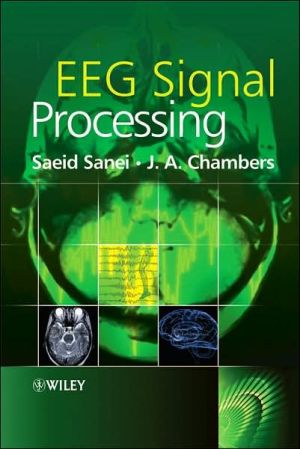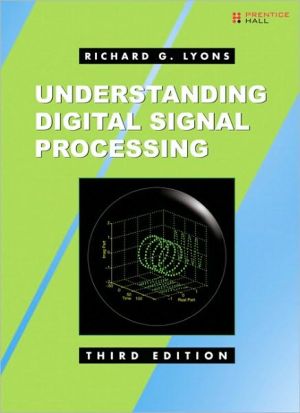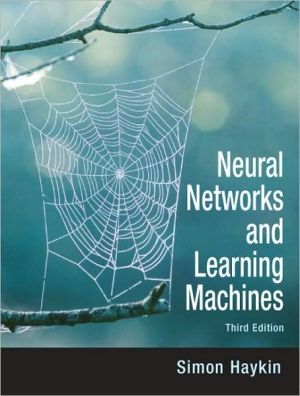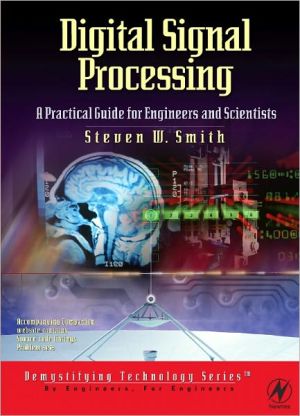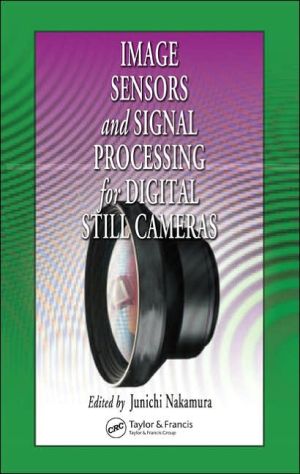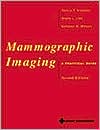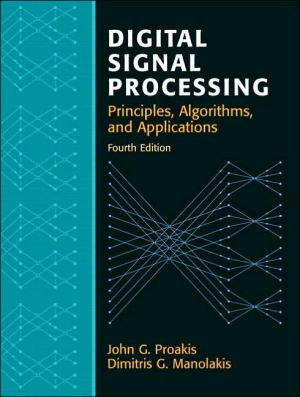EEG Signal Processing
Electroencephalograms (EEGs) are becoming increasingly important measurements of brain activity and they have great potential for the diagnosis and treatment of mental and brain diseases and abnormalities. With appropriate interpretation methods they are emerging as a key methodology to satisfy the increasing global demand for more affordable and effective clinical and healthcare services.\ Developing and understanding advanced signal processing techniques for the analysis of EEG signals is...
Search in google:
Electroencephalograms (EEGs) are becoming increasingly important measurements of brain activity and they have great potential for the diagnosis and treatment of mental and brain diseases and abnormalities. With appropriate interpretation methods they are emerging as a key methodology to satisfy the increasing global demand for more affordable and effective clinical and healthcare services. Developing and understanding advanced signal processing techniques for the analysis of EEG signals is crucial in the area of biomedical research. This book focuses on these techniques, providing expansive coverage of algorithms and tools from the field of digital signal processing. It discusses their applications to medical data, using graphs and topographic images to show simulation results that assess the efficacy of the methods. Additionally, expect to find:explanations of the significance of EEG signal analysis and processing (with examples) and a useful theoretical and mathematical background for the analysis and processing of EEG signals;an exploration of normal and abnormal EEGs, neurological symptoms and diagnostic information, and representations of the EEGs;reviews of theoretical approaches in EEG modelling, such as restoration, enhancement, segmentation, and the removal of different internal and external artefacts from the EEG and ERP (event-related potential) signals;coverage of major abnormalities such as seizure, and mental illnesses such as dementia, schizophrenia, and Alzheimer’s disease, together with their mathematical interpretations from the EEG and ERP signals and sleep phenomenon;descriptions of nonlinear and adaptive digital signal processing techniques for abnormality detection, source localization and brain-computer interfacing using multi-channel EEG data with emphasis on non-invasive techniques, together with future topics for research in the area of EEG signal processing.The information within EEG Signal Processing has the potential to enhance the clinically-related information within EEG signals, thereby aiding physicians and ultimately providing more cost effective, efficient diagnostic tools. It will be beneficial to psychiatrists, neurophysiologists, engineers, and students or researchers in neurosciences. Undergraduate and postgraduate biomedical engineering students and postgraduate epileptology students will also find it a helpful reference.
Preface. List of Abbreviations. List of Symbols. 1 Introduction to EEG. 1.1 History. 1.2 Neural Activities. 1.3 Action Potentials. 1.4 EEG Generation. 1.5 Brain Rhythms. 1.6 EEG Recording and Measurement. 1.6.1 Conventional Electrode Positioning. 1.6.2 Conditioning the Signals. 1.7 Abnormal EEG Patterns. 1.8 Ageing. 1.9 Mental Disorders. 1.9.1 Dementia. 1.9.2 Epileptic Seizure and Nonepileptic Attacks. 1.9.3 Psychiatric Disorders. 1.9.4 External Effects. 1.10 Summary and Conclusions. References. 2 Fundamentals of EEG Signal Processing. 2.1 EEG Signal Modelling. 2.1.1 Linear Models. 2.1.2 Nonlinear Modelling. 2.1.3 Generating EEG Signals Based on Modelling the Neuronal Activities. 2.2 Nonlinearity of the Medium. 2.3 Nonstationarity. 2.4 Signal Segmentation. 2.5 Signal Transforms and Joint Time–Frequency Analysis. 2.5.1 Wavelet Transform. 2.5.2 Ambiguity Function and the Wigner–Ville Distribution. 2.6 Coherency, Multivariate Autoregressive (MVAR) Modelling, and Directed Transfer Function (DTF). 2.7 Chaos and Dynamical Analysis. 2.7.1 Entropy. 2.7.2 Kolmogorov Entropy. 2.7.3 Lyapunov Exponents. 2.7.4 Plotting the Attractor Dimensions from the Time Series. 2.7.5 Estimation of Lyapunov Exponents from the Time Series. 2.7.6 Approximate Entropy. 2.7.7 Using the Prediction Order. 2.8 Filtering and Denoising. 2.9 Principal Component Analysis. 2.9.1 Singular-Value Decomposition. 2.10 Independent Component Analysis. 2.10.1 Instantaneous BSS. 2.10.2 Convolutive BSS. 2.10.3 Sparse Component Analysis. 2.10.4 Nonlinear BSS. 2.10.5 Constrained BSS. 2.11 Application of Constrained BSS: Example. 2.12 Signal Parameter Estimation. 2.13 Classification Algorithms. 2.13.1 Support Vector Machines. 2.13.2 The k-Means Algorithm. 2.14 Matching Pursuits. 2.15 Summary and Conclusions. References. 3 Event-Related Potentials. 3.1 Detection, Separation, Localization, and Classification of P300 Signals. 3.1.1 Using ICA. 3.1.2 Estimating Single Brain Potential Components by Modelling ERP Waveforms. 3.1.3 Source Tracking. 3.1.4 Localization of the ERP. 3.1.5 Time–Frequency Domain Analysis. 3.1.6 Adaptive Filtering Approach. 3.1.7 Prony’s Approach for Detection of P300 Signals. 3.1.8 Adaptive Time–Frequency Methods. 3.2 Brain Activity Assessment Using ERP. 3.3 Application of P300 to BCI. 3.4 Summary and Conclusions. References. 4 Seizure Signal Analysis. 4.1 Seizure Detection. 4.1.1 Adult Seizure Detection. 4.1.2 Detection of Neonate Seizure. 4.2 Chaotic Behaviour of EEG Sources. 4.3 Predictability of Seizure from the EEGs. 4.4 Fusion of EEG–fMRI Data for Seizure Prediction. 4.5 Summary and Conclusions. References. 5 EEG Source Localization. 5.1 Introduction. 5.1.1 General Approaches to Source Localization. 5.1.2 Dipole Assumption. 5.2 Overview of the Traditional Approaches. 5.2.1 ICA Method. 5.2.2 MUSIC Algorithm. 5.2.3 LORETA Algorithm. 5.2.4 FOCUSS Algorithm. 5.2.5 Standardized LORETA. 5.2.6 Other Weighted Minimum Norm Solutions. 5.2.7 Evaluation Indices. 5.2.8 Joint ICA–LORETA Approach. 5.2.9 Partially Constrained BSS Method. 5.3 Determination of the Number of Sources. 5.4 Summary and Conclusions. References. 6 Sleep EEG. 6.1 Stages of Sleep. 6.1.1 NREM Sleep. 6.1.2 REM Sleep. 6.2 The Influence of Circadian Rhythms. 6.3 Sleep Deprivation. 6.4 Psychological Effects. 6.5 Detection and Monitoring of Brain Abnormalities During Sleep by EEG Analysis. 6.5.1 Detection of the Rhythmic Waveforms and Spindles Incorporating Blind Source Separation. 6.5.2 Application of Matching Pursuit. 6.5.3 Detection of Normal Rhythms and Spindles using Higher Order Statistics. 6.5.4 Application of Neural Networks. 6.5.5 Model-Based Analysis. 6.5.6 Hybrid Methods. 6.6 Concluding Remarks. References. 7 Brain–Computer Interfacing. 7.1 State of the Art in BCI. 7.1.1 ERD and ERS. 7.1.2 Transient Beta Activity after the Movement. 7.1.3 Gamma Band Oscillations. 7.1.4 Long Delta Activity. 7.2 Major Problems in BCI. 7.2.1 Preprocessing of the EEGs. 7.3 Multidimensional EEG Decomposition. 7.3.1 Space–Time–Frequency Method. 7.3.2 Parallel Factor Analysis. 7.4 Detection and Separation of ERP Signals. 7.5 Source Localization and Tracking of the Moving Sources within the Brain. 7.6 Multivariant Autoregressive (MVAR) Modelling and Coherency Maps. 7.7 Estimation of Cortical Connectivity. 7.8 Summary and Conclusions. References. Index.
